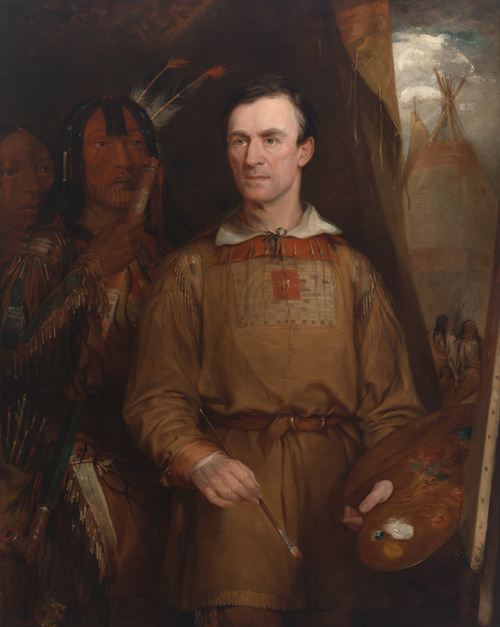George Catlin
by William Fisk (1796–1872)
Oil on canvas, height: 1,588 mm (62.51 in); width: 1,334 mm (52.51 in). Courtesy National Portrait Gallery, Smithsonian Institution; transfer from the Smithsonian American Art Museum; gift of Miss May C. Kinney, Ernest C. Kinney and Bradford.
His curiosity sparked by Lewis and Clark artifacts displayed at Peale’s Museum in Philadelphia, George Catlin (1796–1872) began painting American Indians with a trip up the Mississippi with General William Clark in 1830. He expanded his travels creating over 500 paintings. He also wrote a series of ‘letters’ of his travels, providing an early ethnographic record of many Native nations and tribes: Letters and Notes on the Manners, Customs, and Condition of the North American Indians, Volumes 1 and 2.
Pages with Works by George Catlin
October 29, 1804
Mandan-Hidatsa-Arikara peace
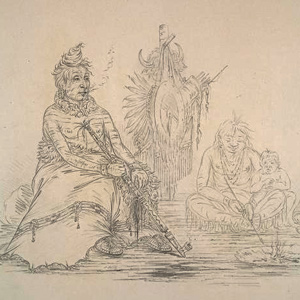

Ruptáre, second Mandan village, ND The standard diplomatic speech is given at a council with the Mandans and Hidatsas. The captains ask them to also smoke the pipe of peace with Arikara Chief Too Né. Medals, flags, and clothing are given as gifts.
February 15, 1803
Pressing Indian affairs
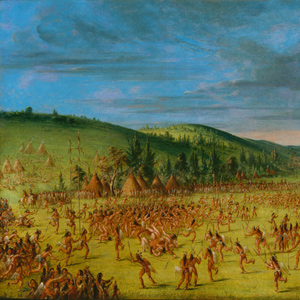

Washington, DC Thomas Jefferson urges the War Department to negotiate for Native Nations’ land in the Illinois and Mississippi Territories before France assumes control of New Orleans and Louisiana.
December 15, 1804
A Mandan game
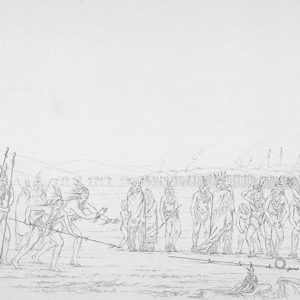

Fort Mandan, ND Ordway and two others visit a Mandan village to trade for corn. There, they see men playing a game involving rolling a stone and sliding sticks across a large ice field.
September 9, 1804
Gangs of buffalo
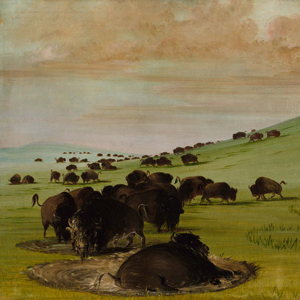

Below Whetstone Bay, SD Clark and York walk the shore. They see hundreds of buffalo throughout the day, and Clark directs York to kill one.
April 5, 1804
A speech for the Iowas
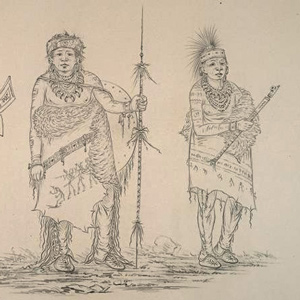

At Camp River Dubois, Clark and Lewis write speeches for the Iowa and Yanktonai People. They send the speeches—along with Jefferson’s questions, vocabulary, and invitation to visit Washington City.
January 5, 1805
The buffalo dance
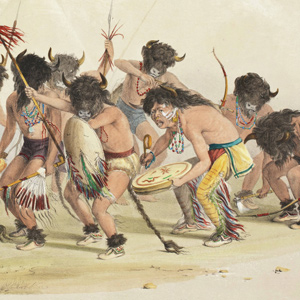

Fort Mandan, ND With information gathered from traders and Indians, Clark works on his map of the west. He also describes the Mandan’s Buffalo Dance ceremony.
August 21, 1804
Big Sioux country
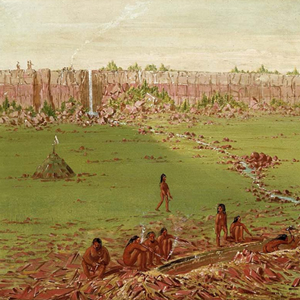

Across from Ponca, NE Strong winds create blowing sands, the sail must be ‘reefed’ and the white pirogue needs ballast to stay on course. Pierre Dorion describes the geography of the Big Sioux country. The Osage delegation arranged by Lewis and Clark prior to heading up the Missouri in May 1804 heads home.
December 6, 1804
Frostbitten hunters
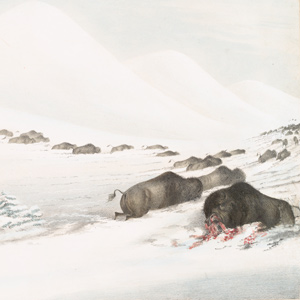

Fort Mandan, ND Clark and sixteen men have a good day hunting buffalo, but several men are frostbitten. A Mandan man visits wearing only pronghorn leggings and a buffalo robe.
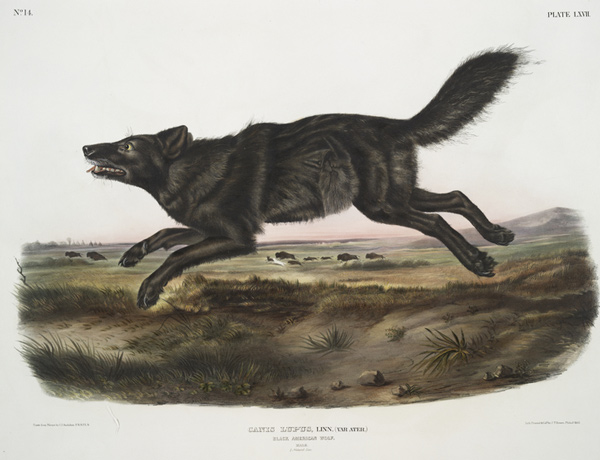
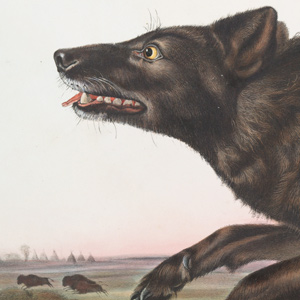
They didn’t get credit for it, but Lewis and Clark were the first to describe these wily canine predators.
Wild Horses
by Joseph A. Mussulman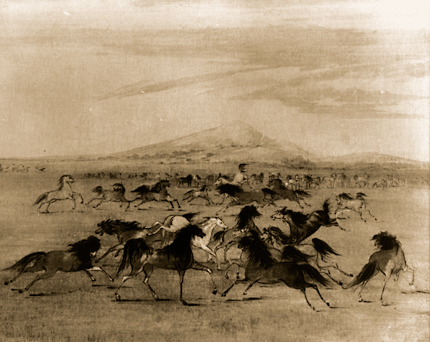

On 14 August 1805, Meriwether Lewis commented on the Shoshones’ herds: “Most of them are fine horses…. I saw several with Spanish brands on them, and some mules which they informed me that they had also obtained from the Spaniards.”
October 27, 1804
Ruptáre Village
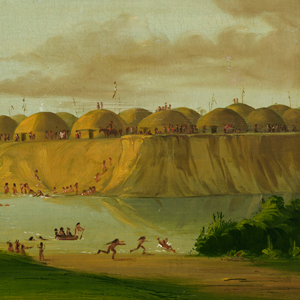

Ruptáre, second Mandan village, ND The expedition travels four miles among a complex of Mandan and Hidatsa villages. They find René Jusseaume living there and hire him as an interpreter.
October 8, 1804
Arikara village Sawa-haini
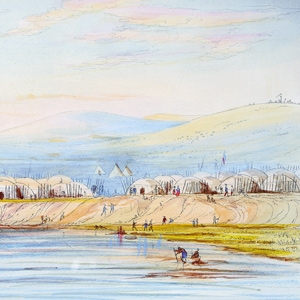

Arikara Village Sawa-haini, SD The expedition boats head up the shallow Missouri River bear present Mobridge. Camp is near an active Arikara village where the interpreter Joseph Gravelines is found. They also find abundant buffaloberries near the creeks.
April 27, 1805
Entering Montana
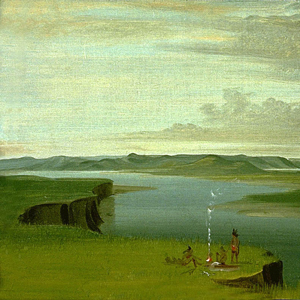

The captains make separate recommendations to locate a fort or trading post at the mouth of the Yellowstone River. By midday, the expedition enters present Montana and encamps near Snowden Bridge.
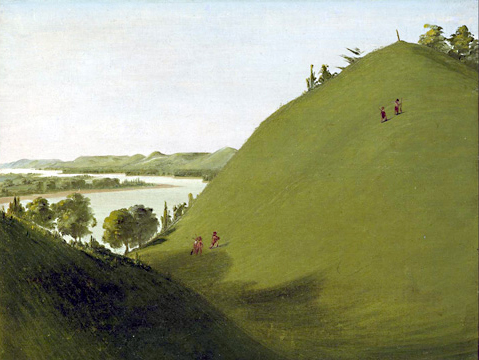

Floyd’s grave became a conspicuous point and a historic shrine on the Lewis and Clark trail almost immediately after the expedition was over. The American artist George Catlin painted Floyd’s Bluff in 1832, with the original cedar marker still in place.
December 23, 1803
Uncertainties with Louisiana slaves
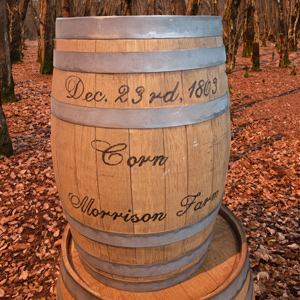

Winter Camp, Wood River, Illinois
Lewis investigates potential problems with the current French system of slavery and the future transfer of Louisiana to the United States. At Wood River, work continues building huts and a Lenape Delaware Indian known to Clark visits.
April 13, 1803
Of vast importance
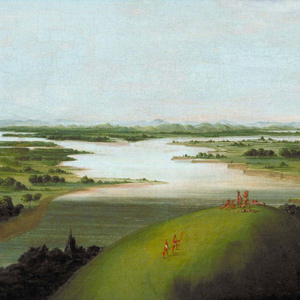

In Washington City, Secretary of the Treasury Albert Gallatin asks Thomas Jefferson to include a report on the fertility of the soil and species of trees his list of questions for Meriwether Lewis.
March 18, 1804
Questions about Indian amusements
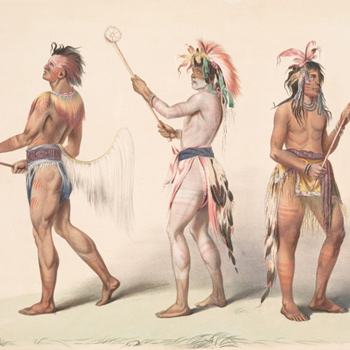

Wood River Camp, IL The day reaches 50° for the first time this year—a signal that the expedition may soon be able to head up the Missouri River. During this period, Clark lists questions about Indian amusements.
March 23, 1804
Kickapoo update
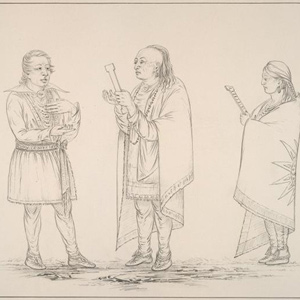

At winter camp across the Mississippi above St. Louis, the man sent up the river to check the status of a Kickapoo war party returns with a letter from François Saucier, the commander of Portage des Sioux.
